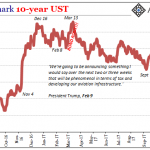Phil Murphy, the leading Democratic candidate for governor of New Jersey, has made a state-owned bank a centerpiece of his campaign. He says the New Jersey bank would “take money out of Wall Street and put it to work for New Jersey – creating jobs and growing the economy [by] using state deposits to finance local investments… and… support billions of dollars of critical investments in infrastructure, small businesses, and student loans – saving our residents money and returning all profits to the taxpayers.”
A former Wall Street banker himself, Murphy knows how banking works. But in an April 7 op-ed in The New Jersey Spotlight
, former New Jersey state treasurer Andrew Sidamon-Eristoff questioned the need for a state-owned bank and raised the issue of risk. This post is in response to those arguments, including a short refresher on the stellar model of the Bank of North Dakota (BND), currently the nation’s only state-owned depository bank.
Which Is Safer, a Public Bank or a Private Bank?
Sidamon-Eristoff warns, “[W]e need to remember that a public bank would be lending the state’s operating cash balances – we’re not talking about an enormous pool of unused, unencumbered cash – and that any repayment shortfalls or liquidity restrictions could potentially impact the availability of funds for employee salaries and other regular operating expenses.”
As the Bank of England recently confirmed, however, banks do not actually lend their deposits. The deposits at all times remain in the bank, available for withdrawal. They are no less available to the state when deposited in its own bank than in Bank of America. In fact, they are more at risk in Bank of America and other Wall Street banks, which with the repeal of Glass-Steagall are allowed to commingle their funds. That means they can gamble with their deposits in derivatives and other risky ventures, something a transparent and accountable state-owned bank would not be allowed to do.
Today, government deposits are at risk in private banks for another reason. Banks across the country are telling governments of all sizes that they can no longer provide the collateral required to fully protect these deposits while paying a competitive interest rate on them, due to heightened regulatory requirements. FDIC insurance covers only the first $250,000 of these deposits, a sum government revenues far exceed. The bulk of these deposits are thus left insufficiently protected against a banking collapse like that seen in 2008-09—something that is widely predicted to happen again.
In North Dakota, by contrast, state revenues are deposited by law in the state-owned Bank of North Dakota and are guaranteed by the state. The BND pays a competitive interest rate on these deposits that is generally at about the midpoint of rates paid by other banks in the state. The BND, in turn, guarantees municipal government deposits, which are generally reserved for local banks. Unlike in other states, where local banks must back public deposits with collateral to an extent that makes the funds largely unavailable for lending, North Dakota’s community banks are able to use their municipal government deposits to back loans because the BND provides letters of credit guaranteeing them.













Leave A Comment